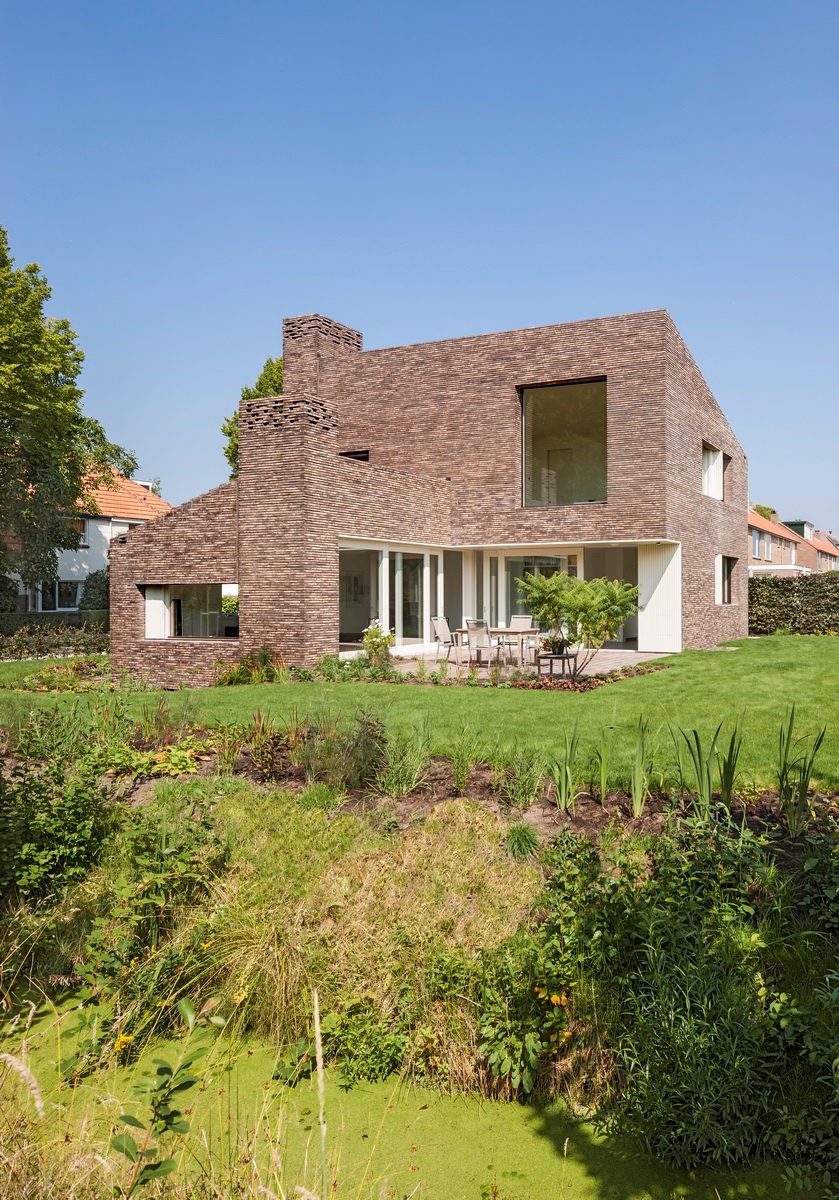BRICKHOUSE
The brick house stands on the verge of village and landscape. In this house village characteristics and landscape qualities meet. The architecture of this house is founded on a traditional brick design with rural characteristics. All the surrounding houses are brickwork and have a sloping roof with ceramic roof tiles. There is a sight of chimneys, overhangings, wooden shutters, alcoves and other subtle accents. A bright and modern house has been created by using and reinterpreting these ingredients.


The typical shape of the roof rises from the landscape and the inside living areas are focused on thesurrounding landscape. The house is embedded in its environment by its shape, spatial construction and the used materials. It is constructed almost exclusively out of one type of material: bricks! The elongated shapes of brickwork possess a strong differentiation and thereby connects with the rural character of the surroundings.

The house looks as if it is a monolithic brick sculpture because the facades and the roof areas are all made of the same material. The Danish brick manufacturer Peterson has developed bricks especially for this project. This causes the house front to seamlessly merge into the roof. Every brick is handmade, which enables a great variety of solid corner pieces and moulded bricks. Also the chimneys, lintel and brick-on-edge sills are made with the same material. From a similar set brick, manufacturer Peterson, has previously created the famous bricks for Peter Zumthors Kolumba Museum in Cologne.

The brick monolith is perforated by neat window-openings with deep nudes of the frames. The side facing the street has a relatively closed façade, but moving towards the landscape openings become wider and the house brightens up
An incision in the front side marks the entrance to the house. Here the use of bright colours matches the plinth of neighbouring houses and breaks with its usual graveness. It is meant as an invitation that gives away a hint of the lighter interior of the house. Also at the rear a marked incision is made in the house’s dimensions. Again the light interior comes forward to ease the transition to the garden.

The house consists partly of two storeys and partly of one storey. Town-planning wise, the higher part matches with the adjacent two-storey houses whereas the lower part merges into the landscape. To enable a larger living space a basement is added so the dwelling still fits proportionally regarding its context.

The house is L-shaped, making the patio and garden part of the living experience. At the heart of the house a vacant space with an open staircase spatially connects the two storeys. Additional windows inside the house provide exciting look-troughs and light from surprising angles. The bright interior keeps interacting with the surrounding greenery and the house’s brick boundaries; even the terrace and the annex are made of…brick!


Zecc
Zecc Architecten BV
Westerkade 4
3511 HA Utrecht
Netherlands
T+31(0)30 273 1289
info@zecc.nl www.zecc.nl
Zecc Architecten BV
Westerkade 4
3511 HA Utrecht
Netherlands
T+31(0)30 273 1289
info@zecc.nl www.zecc.nl
Photographer
JRimageworks
www.JRimageworks.com

